Did you know immersive virtual reality in web design can greatly increase user interaction? This new method isn’t just passing by; it’s shaping how we experience content. Users now enjoy unforgettable connections and stories, thanks to this change.
Imagine a website where each interaction adds depth and movement, transporting you to another realm. That’s what immersive virtual reality web design does. It turns visitors from mere onlookers to active participants in captivating stories. It uses visuals, sound, and easy interactions to take people on unforgettable journeys, no matter if they’re non-profits or startups.
This VR design does more than look good; it tells stories and entertains. Keeping users engaged is key, and immersive sites are at the forefront. Techniques like micro-interactions and parallax scrolling add to the sense of depth. Strategic audio and video use also plays a big part in engaging visitors.
However, creating immersive 3D spaces while keeping sites easy to use is challenging. The goal is to balance the depth of immersion with seamless navigation and interaction. That’s the sign of true skill in VR web design.
Key Takeaways
- Immersive virtual reality website design is reshaping user engagement, inviting visitors to interact with your brand’s story.
- Integrating interactive 3D experiences, VR web design captivates users in a multi-dimensional narrative.
- Techniques like micro-interactions, parallax scrolling, and the use of audio-visuals are key in enhancing the immersive aspect of web design.
- Balancing rich interactivity with accessibility and performance is essential for successful immersive websites.
- Leading examples in the field showcase the effectiveness of encompassing storytelling and interactive design.
Understanding Immersive Virtual Reality Website Design
In the world of digital marketing, immersive website development changes how brands meet their audience. It goes beyond just sharing info. It’s about creating a world where users can connect deeply with what they see and read. This change is mainly due to virtual reality experiences being added to websites, making browsing a remarkable journey.
https://www.youtube.com/watch?v=yoIf4vELcjQ
The key goal is to boost user engagement. Every interaction should leave a strong impression. We’ll look into what makes immersive websites special. And see how they can greatly improve how brands interact with people.
The Essence of Immersive Websites
An immersive website pulls users in right from the start. Imagine visiting a website and stepping into a 3D world, like in a video game. This is made possible through advanced programming. It blends videos, sounds, and graphics into one smooth, inviting virtual place.
Evolution of Interactive 3D Experiences
We’ve moved from basic websites to interactive 3D spaces. This jump in immersive website development is huge. With VR headsets and AR apps, websites now offer what was once only in fancy games. This tech creates a doorway into the brand’s world. For more details, check out virtual reality in web design.
The Impact of Immersion on Brand Awareness
Immersive websites do more than just entertain. They make the brand stick in the user’s mind. By using virtual reality experiences, brands share complex messages and build emotional bonds unlike traditional sites. VR makes users stay longer on the site. This increases the chance of turning interest into action.
In summary, as we explore new digital possibilities, immersive website development is a game-changer for businesses aiming to make a significant online impact. Through VR, companies become not just visible; they become an experience.
Captivating Users Through Micro-Interactions
In the world of virtual reality design, micro-interactions play a huge role. These small but powerful interactions are vital for keeping users hooked on interactive 3D experiences. Let’s look at how these small details change the way users interact with a VR environment.
What are Micro-Interactions?
Micro-interactions are slight animations or reactions happening when users do something, like hover, click, or scroll. They make the experience feel real and interactive, which is super important in a virtual reality design. They show users right away if their actions did something, helping them know what to do next.
Examples of Effective Micro-Interactions
Great micro-interactions mix ease with purpose, making the experience better without confusion. For instance, slight changes in lighting can show users where to go or what to focus on in VR. This guides them smoothly through a space without direct telling them what to do.
- Moving from scene to scene smoothly helps users know where they are in the virtual world.
- Sound effects let users know when they’ve done something right or when something important happens.
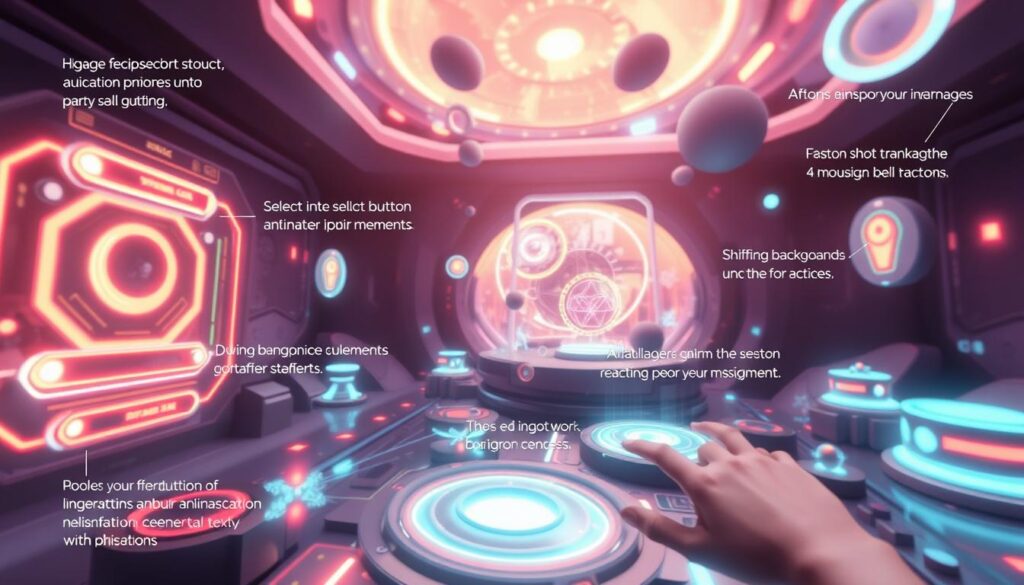
Micro-interactions have become key in keeping users engaged in many digital settings, now essential in VR and AR worlds.
Micro-interactions make virtual reality feel more real and engaging. Using these little design features well can really change the game in creating top-notch interactive 3D experiences.
To wrap up, as virtual reality design grows, so does the use of clever interactive elements. Micro-interactions lead this growth, offering new ways to catch and keep users’ interest. It shows that even the tiniest details can make a big difference.
Integrating Parallax Scrolling for Depth Perception
In the last few years, immersive virtual reality website design has greatly benefited from parallax scrolling. This technique changes how fast background and foreground contents move. It creates a strong depth effect. This is very effective in 3D web experiences, making static images feel dynamic.
The idea comes from old animations and video games but fits perfectly into today’s web design. It’s popular because it makes websites more engaging. Users find themselves more connected to the content. Parallax scrolling makes stories more interesting and keeps users on the page longer.
Why is parallax scrolling so important in cutting-edge technology for websites? It uses visual perception to create a three-dimensional look. This keeps users looking longer. By moving elements at different speeds, it feels like real life. This makes the digital world more exciting and real.
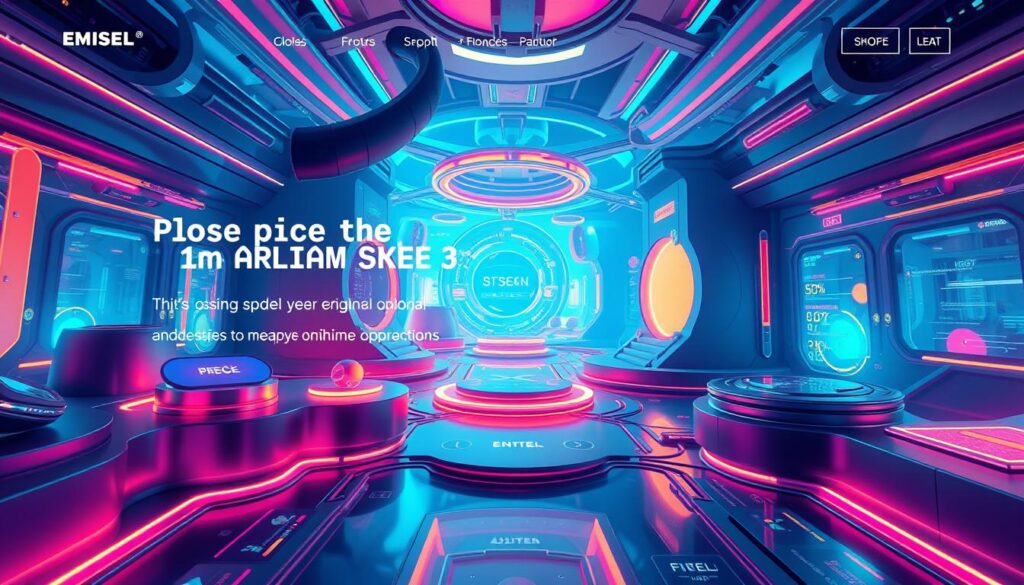
Combining storytelling with parallax has a big impact on how interested users are. Successful campaigns like “Peugeot 208 GTi Legend” used it well. So did the “New York Times’ Snow Fall” story. These stories pull readers in deep.
But, it’s very important to plan carefully. Websites with parallax scrolling need to work well on all devices. This means thinking about how everyone can access and enjoy these immersive websites.
Let’s look at how parallax scrolling has changed 3D web experience. Check the table below. It shows how parallax makes websites better and more engaging:
| Aspect | Detail | Impact |
|---|---|---|
| Depth Creation | Moves background slower than foreground | Enhances depth perception, enriching user interaction |
| User Engagement | Increases dwell time and interaction | Leads to higher engagement rates |
| Mobile Responsiveness | Adaptable to various screen sizes | Ensures consistent experience across devices |
| Storytelling | Integrates narrative elements | Creates more compelling and memorable content |
| Performance Optimization | Requires technical planning | Improves accessibility and usability |
As technology grows, parallax scrolling is keeping up. It’s joining forces with AI and VR. This means web experiences will become even more immersive and tailored in the future.
Enhancing Realism with Three-Dimensional Visuals
Exploring the realm of immersive website development reveals the crucial role of three-dimensional visuals. These visuals, ranging from simple graphics to complex scenes, mirror the real world closely. They significantly boost user engagement and realism in interactive web design.
The birth of three-dimensional visuals in the 1960s marked the start of a revolution. Web technologies advanced swiftly, recognizing the potential of 3D to capture attention and convey information. Virtual Reality Markup Language (VRML) was introduced in 1994, laying the groundwork for today’s sophisticated 3D web technologies like WebGL.
Notable projects like the 2012 New York Times feature, ‘Snow Fall’, leveraged 3D visuals to tell a captivating story. This use of three-dimensional visuals in web design highlights their robust impact on user experience.
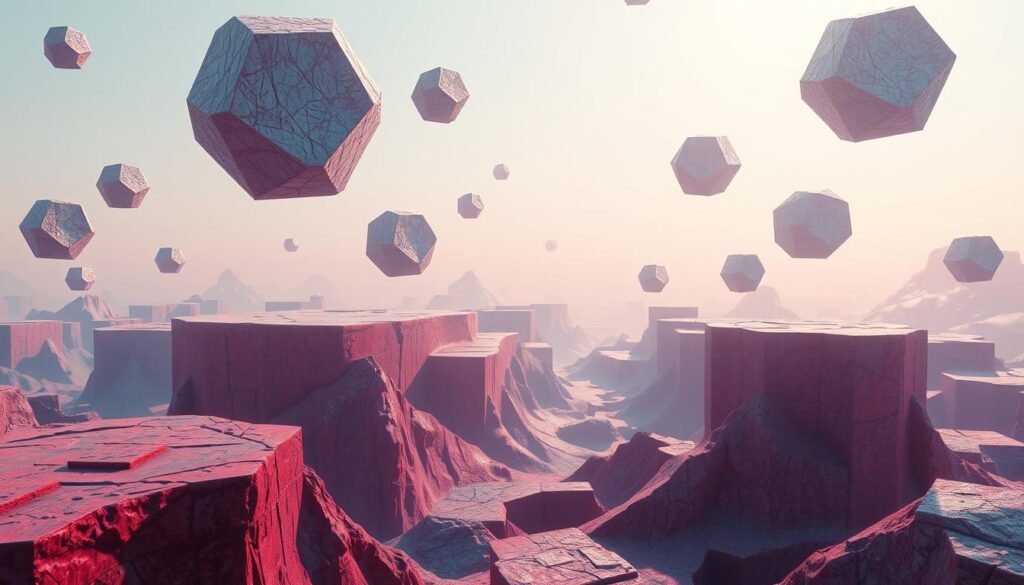
Applying 3D technology in web design requires a balance between simplicity and vision. The goal is to enhance the user experience without creating confusion. Leading tools such as AutoCAD, Blender, and SketchUp help designers create engaging and interactive designs.
Modern tools like Vectary and Vev are incorporating virtual reality (VR) to enhance interactive web design further. This move towards VR aims to create immersive experiences, making virtual spaces feel real to the audience.
The shift towards 3D designs in web development has clear business advantages. Using VR and ongoing improvements in 3D imagery, companies in various industries can present their products and services more vividly. This strategy boosts user experience and assists in increasing conversion rates.
| Year | Technology | Impact |
|---|---|---|
| 1960s | 3D Modeling Introduction | Birth of 3D visualization |
| 1994 | VRML | First step towards interactive 3D on web |
| 1997 | Flash | Enhanced animations and graphics |
| 2001 | X3D format | Simplified 3D web implementation |
| 2011 | WebGL | Standardized 3D graphics API |
| 2012 | Snow Fall Feature by NYT | Popularized 3D storytelling |
The ongoing development and adoption of 3D technologies continue to revolutionize immersive website development. This evolution impresses users and changes how businesses connect with their online audiences.
Elevating Experiences with Audio and Video Elements
In today’s digital world, immersive virtual reality website design changes how we interact online. Audio and video elements play a key role. They make websites look better and get users more involved through virtual reality experiences.
Audio is key to creating a mood and atmosphere in virtual spaces. It turns browsing a website into both a visual and auditory journey. For example, background music in a gallery or sound effects in a game enhance the experience.
Video adds action to a website’s story. It can quickly explain hard ideas or show product demos. This makes the overall user experience fuller and more engaging.
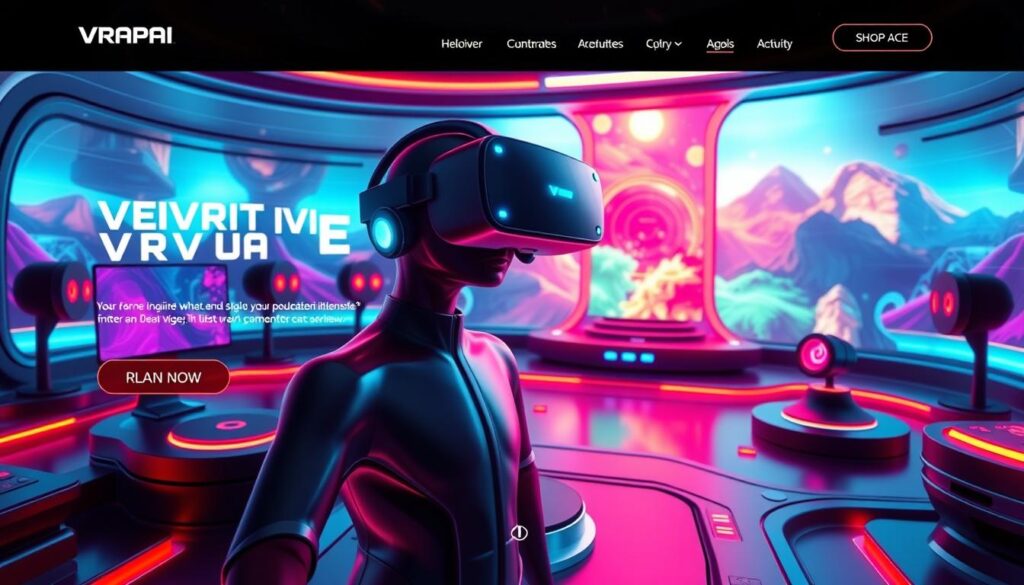
- Set the scene: Audio sets an emotional tone, guiding users’ feelings and expectations.
- Engage visually: Video helps illustrate complex concepts quickly and effectively.
- Create depth: Combined, audio and video deepen the user’s immersion, turning passive viewing into an interactive encounter.
Let’s talk about why multimedia integration is key in web design and performance:
| Aspect | Impact | Strategic Importance |
|---|---|---|
| Interactivity | Converts passive viewers into active participants | Increases user engagement, essential for memorable experiences |
| Audio | Sets mood and elevates impact | Enhances user connection and personalizes the experience |
| Video | Adds dynamic visual context | Improves understanding and retention of information |
| Optimization | Ensures fast loading times and cross-platform compatibility | Critical for preventing user drop-offs and ensuring smooth navigation |
| Testing | Guarantees functionality of multimedia elements | Vital for maintaining quality and performance across user visits |
The growth in immersive virtual reality website design means more than just prettier websites. It means making sites that users can interact with in deeper ways. By adding advanced multimedia, we’re exploring new possibilities in web design. This promises more engaging and immersive experiences for users everywhere.
The Role of Horizontal Scrolling in Storytelling
Horizontal scrolling offers a unique way to tell stories on websites, especially compared to vertical scrolling. It encourages users to dive deeper into the content. This creates a more controlled and impactful experience.
Horizontal Scrolling vs. Vertical Scrolling
Horizontal scrolling differs from vertical scrolling because it supports slow browsing. It leads users through a story step by step. This technique is vital for digital marketing strategies aiming to fully engage an audience.
Case Studies: Immersive Horizontal Scrolls
Many successful websites use horizontal scrolling to display their work in a captivating way. Not only does this make the site look good. It also creates memorable experiences that make the brand stick in people’s minds. Interesting elements like zoom buttons and clickable images add to this experience.
Online galleries and interactive maps benefit from horizontal scrolling too. It gives users a new way to explore content that’s easy to use and looks great. This enables storytellers to be more creative and impactful.
For a successful horizontal scroll, consider how people navigate your site. Using arrows to guide users sideways is a common approach. It’s also important to keep the menu easy to find and use. This helps users enjoy the journey without feeling lost.
Horizontal scrolling can change a simple visit to your website into an engaging adventure. By focusing on user needs and inventive navigation, your site can stand out. It shows your commitment to quality and innovation, essential in today’s digital world.
Incorporating Cutting-Edge Technology with VR Design Tools
The rise of immersive virtual reality website design has changed how we explore digital spaces. It makes user experiences deeper and more engaging. By using cutting-edge technology, immersive website tools are key to creating these new experiences.
VR in web design makes sites look better and keeps users around longer. For example, virtual tours make visiting real estate and travel sites more fun. It helps users connect more, which increases sales and user activity. Online stores using VR let people check out products in 3D, making shopping interactive.
On the building side, immersive website tools like A-Frame, Unity 3D, and Three.js make it easier to create VR. They let designers add videos, animations, and interactive stuff without needing to code much.
| Tool | Main Feature | Best Use-case |
|---|---|---|
| Three.js | Creates and displays animated 3D computer graphics in a web browser | Complex animations and visualizations |
| A-Frame | Web framework for building virtual reality experiences | Interactive VR scenes |
| Unity 3D | Development platform for creating multiplatform 3D and 2D VR games | Immersive virtual tours and games |
Using these VR tools not just for looks, but for how well they work is important. Making VR sites run smoothly is key for fun, hassle-free visits on all devices, even fancy VR headsets like Oculus Rift and HTC Vive.
Good VR design means keeping things simple and easy to use. This helps everyone get around virtual worlds, no matter how new they are to VR. VR design takes more than just traditional web design. It’s about thinking of all ways users interact, changing how we make user interfaces.
As VR and web design keep evolving, they promise to make the web even more exciting. Mixing cutting-edge technology with easy-to-use immersive website tools will keep changing the game. It makes online spaces more engaging and fun.
Immersive User Interface: Best Practices for Usability and Engagement
In virtual reality, a great user interface is key. It makes users stay interested and engaged. We’re exploring how to make interfaces that are easy to use and fun.
Easy navigation makes a big difference in virtual reality. It helps users avoid getting frustrated. To do this, keep things simple and avoid clutter. Using gaze and gestures helps users move naturally in these spaces. This makes virtual reality enjoyable for everyone, no matter their ability.
Simple Navigation for an Enhanced UX
Good virtual reality needs easy navigation. This keeps users from feeling lost. It’s important to make pathways simple and reduce clutter.
Using gaze-based navigation and gestures can improve ease of use. These methods support easy movement in virtual spaces. They help make the virtual environment accessible to all users.
Balancing Interactivity and Overwhelming Features
Interactive features are important but can be too much. The goal is to keep users engaged without overwhelming them. Using a few interactive elements and revealing complex info bit by bit works well.
This approach keeps users interested without overloading them. It’s about finding the right amount of interactivity. This way, users have enough to explore without feeling bombarded.
Unity of Form and Function in UI
For the best VR, the UI’s design and operation must blend perfectly. This ensures all elements are useful and enhance the experience. Using responsive controls and intuitive design helps a lot. It lets users interact naturally, making the experience feel real.
As VR technology advances, interfaces need to keep up. The aim is to make an interface that’s not just attractive but also easy to use. Making the interface intuitive boosts user engagement. This is what makes VR experiences stand out.
Lessons from Successful Immersive Virtual Reality Website Design
Exploring successful immersive virtual reality website designs reveals key elements that connect with users. Utilizing virtual reality experiences, VR web design, and interactive 3D experiences grabs an audience’s attention. It keeps them engaged for a longer time.
Effective VR web design smoothly blends UI elements into the 3D world. This approach reduces distractions for users. It ensures a natural interaction with the virtual environment.
Data across various sectors show the big impact of VR and AR technologies. For example, real estate sites with virtual tours get 20% more inquiries. This emphasizes the strong effect of immersive experiences on user interest and business performance.
But how do these experiences look, and how should they be crafted for the best effect? Let’s look at some key aspects:
- Depth and perspective: Adding realistic lights, shadows, and textures makes a scene feel real, which impresses viewers.
- User interaction: VR sites offer special ways to tell stories, drawing in users into active narratives. This makes users stay longer.
- Accessibility: Designing for users of all abilities means everyone can enjoy the digital experience without barriers.
| Feature | Impact on User Engagement | Example Industries |
|---|---|---|
| Virtual Tours | Increase inquiries by 20% | Real Estate |
| Product Demos | 25% higher conversion rate | Retail |
| Educational Content | 35% improved user retention | Education |
The future of VR in web design lies in more than just looks or tech. It’s also in empathy and inclusion. Making immersive virtual reality experiences accessible means reaching a wider range of users effectively.
As VR technology grows, it’s critical to keep up with new trends. Using feedback from real users helps us succeed in immersive VR web design.
Innovative Examples of Immersive Websites to Inspire Your Design
Exploring immersive website designs reveals something big. VR design is changing how we interact online. For example, Joshua’s World offers a 3D space full of interactive features. It shows how user interaction and stories can make brand connections stronger.
Interactive Portfolios and Brand Stories
Iconic Mints presents itself as more than a NFT gallery. It’s a place where people can interact in real-time. Canoo’s virtual showroom does more than show cars. It aims to improve buying experiences while being eco-friendly. These examples don’t just push their fields forward. They also create engaging, interactive digital stories.
Virtual Tours and Engaging Presentations
HarrodsXBurberry offers a one-of-a-kind luxury shopping experience. It’s set in a meta-venue above the clouds. Sustainable Horizons provides virtual tours that mix real and abstract elements. This is done with soothing technology in mind. Such VR experiences show how virtual spaces can be memorable and engaging. To learn more about using SEO for these digital experiences, check out TAMERDigital.

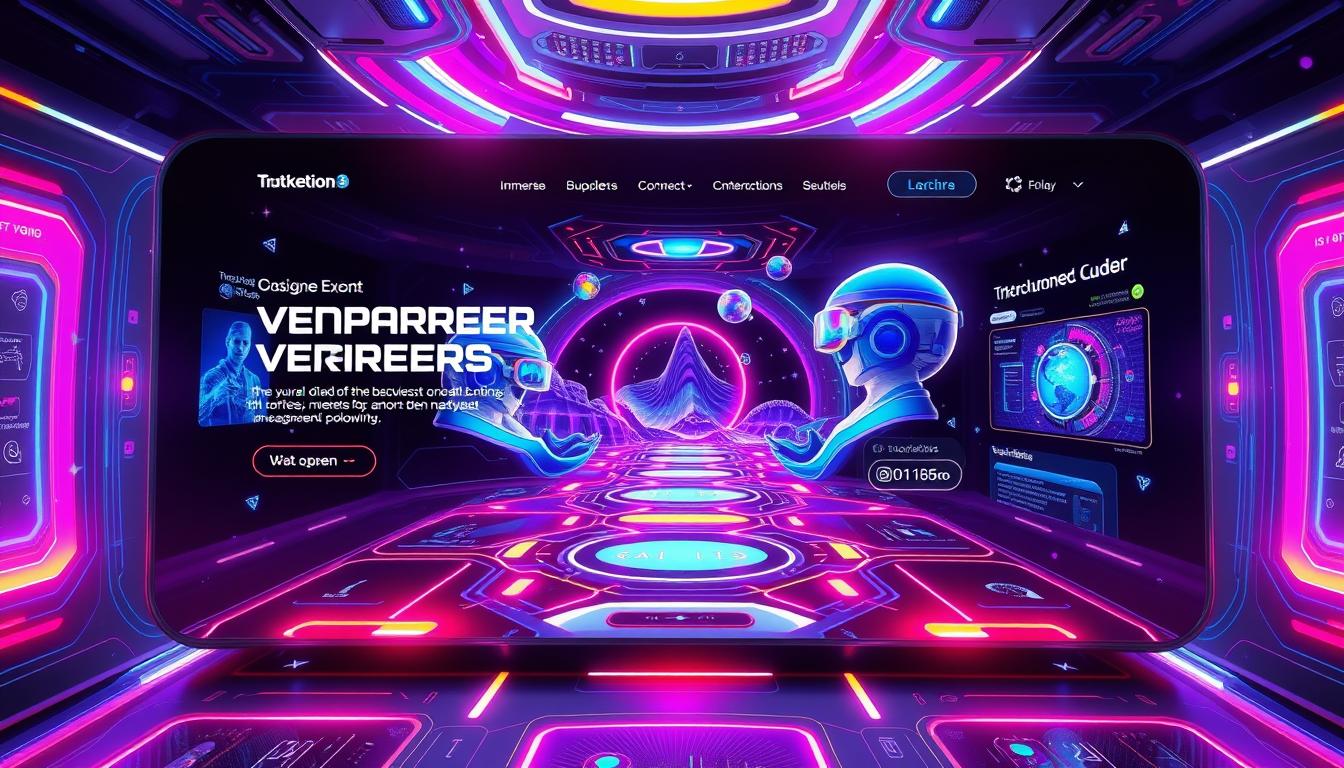
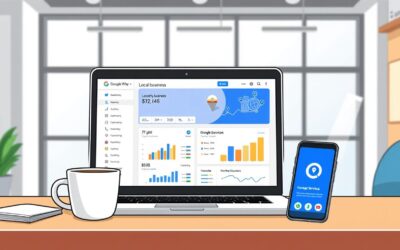

0 Comments